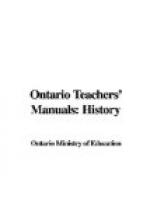We’ll stand by the dear
old flag, boys,
Whatever be said
or done,
Though the shots come fast,
as we face the blast,
And the foe be
ten to one—
Though our only reward be
the thrust of a sword
And a bullet in
heart or brain.
What matters one gone, if
the flag float on
And Britain be
Lord of the main!
—Frederick George Scott
THE UNION JACK
It’s only a small piece
of bunting,
It’s only
an old coloured rag;
Yet thousands have died for
its honour,
And shed their
best blood for the flag.
It’s charged with the
cross of St. Andrew,
Which, of old,
Scotland’s heroes has led;
It carries the cross of St.
Patrick,
For which Ireland’s
bravest have bled.
Joined with these is our old
English ensign,
St. George’s
red cross on white field;
Round which, from Richard
to Roberts,
Britons conquer
or die, but ne’er yield.
It flutters triumphant o’er
ocean,
As free as the
wind and the waves;
And bondsmen from shackles
unloosened,
’Neath its
shadows no longer are slaves.
It floats o’er Australia,
New Zealand,
O’er Canada,
the Indies, Hong Kong;
And Britons, where’er
their flag’s flying,
Claim the rights
which to Britons belong.
We hoist it to show our devotion
To our King, our
country, and laws;
It’s the outward and
visible emblem,
Of progress and
liberty’s cause.
You may say it’s an
old bit of bunting,
You may call it
an old coloured rag;
But freedom has made it majestic,
And time has ennobled
our flag.
FORMS III AND IV
SUGGESTIONS FOR EMPIRE DAY
The exercises on Empire Day may be extended to include most of the subjects on the time-table by providing interesting problems in these subjects which will, at the same time, keep the pupils’ attention focused on the purpose of the day.
The purpose of Empire Day may be stated briefly: (1) To increase the pupils’ knowledge of the various parts of the Empire; (2) To create in them fine ideals of a larger citizenship; (3) To give a feeling of responsibility for Canada’s place and work in the Empire, both now and in the future.
EXERCISES SUGGESTED
1. In literature: Study one or more of the selections in the Public School Readers that are suitable; for example, in the IV Reader, pp. 1, 49, 74, 154, 155, 227, 231, 248, 302, 358, 409; in the III Reader, pp. 55, 140, 246, 258, 274. If these have been studied before, one or two might be read or recited by the pupils. In this Manual poems are given (pp. 73, 74) that may be used in the same way. Pamphlets containing suitable matter for Empire Day have been sent out by the Department of Education on several occasions.




